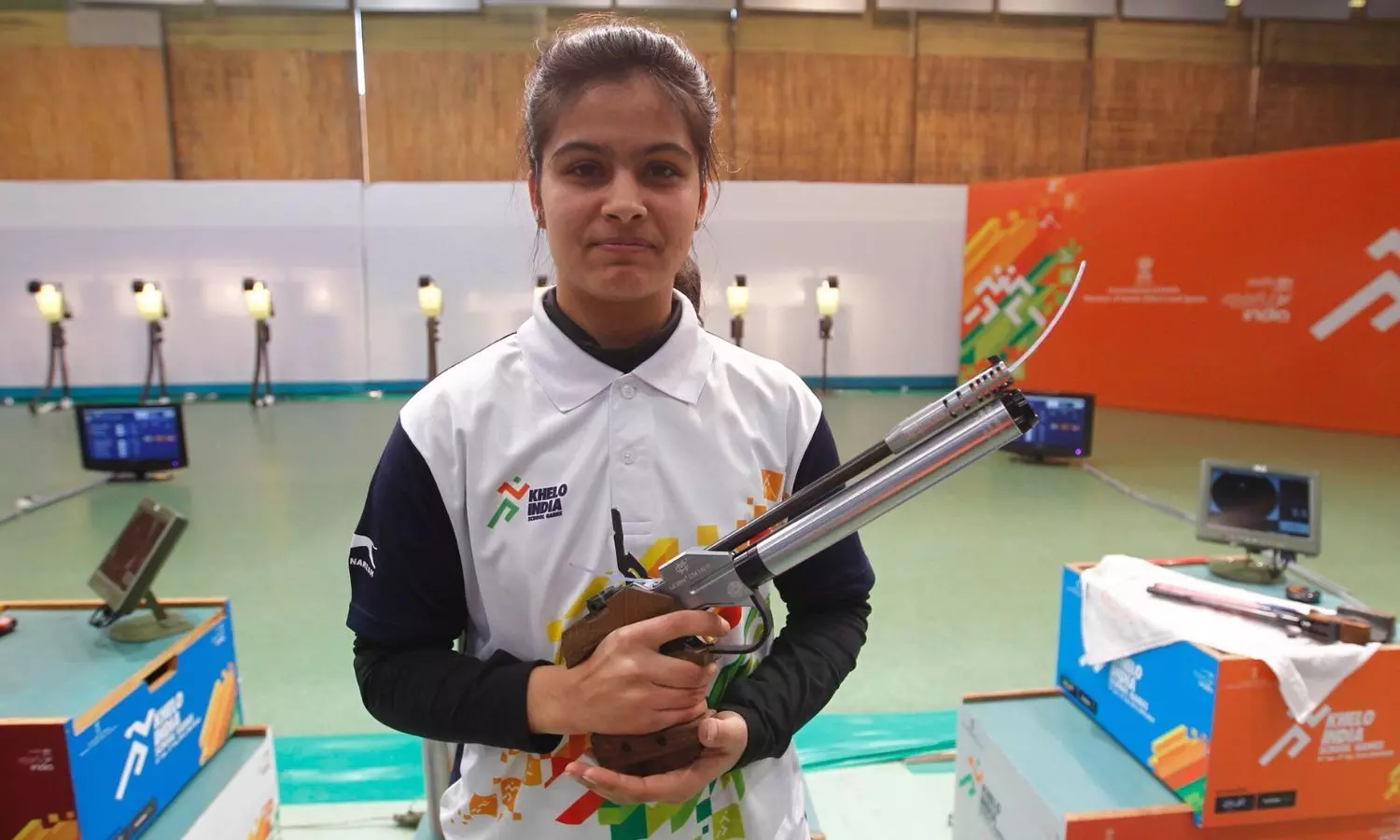GP- Article
How Khelo India Youth Games are shaping India’s sporting future
The movement is building grassroots champions and transforming India's sports ecosystem.

Shooter Manu Bhaker is a prime example of the program’s effectiveness. (Photo credit: Khelo India)
The Khelo India Youth Games (KIYG) have emerged as a pivotal force in transforming India’s sporting landscape. Launched in 2018 under the Ministry of Youth Affairs and Sports, KIYG is the flagship event of the Khelo India programme, aiming to identify young talent, strengthen grassroots participation, and build a pipeline of future Olympians.
Held annually across various host states, the games are not only unearthing athletic potential from all corners of the country, but also transforming how India approaches sports as a career and cultural asset.
Identifying and nurturing talent
Initially launched as the “Khelo India School Games” in 2018, the event was restructured and rebranded in 2019 as the “Khelo India Youth Games” to include college athletes under the U-21 category.
This shift allowed a broader age group to participate and brought it in line with international youth competition standards. Organized by the Sports Authority of India (SAI) in coordination with national federations and host state governments, KIYG has become a major national platform for athletes in more than 25 sports.
Crucially, KIYG is not just about medals—it’s about system-building. It reflects the government’s long-term vision to make sports an integral part of India's educational and developmental framework.
A cornerstone of KIYG’s success is its robust system of talent identification. Every edition attracts thousands of young athletes, creating a vast pool for scouts and coaches to discover promising talent.
The top performers are inducted into the Khelo India Talent Development Programme and receive annual scholarships of ₹6.28 lakh each for training, equipment, nutrition, and international exposure.
Athletes like shooter Manu Bhaker and weightlifter Jeremy Lalrinnunga are prime examples of the program’s effectiveness. Both started their journeys through KIYG and have since gone on to win international medals, including at the Youth Olympics and Commonwealth Games.
Building infrastructure, cultural identity and inclusivity
Every edition of KIYG brings about significant investment in sports infrastructure. Host states are granted central support to upgrade existing facilities or build new ones. These stadiums, training halls, and hostels remain useful even after the event concludes, thereby leaving a lasting impact on the local sports ecosystem.
Alongside physical infrastructure, KIYG has also helped institutionalize human capital.
Coaches, physiotherapists, psychologists, and nutritionists are now an integral part of athlete support teams. This integrated approach reflects a shift toward modern, science-based training regimes that prepare athletes for global competition.
One of the unique aspects of KIYG is the inclusion of indigenous sports like Mallakhamb, Kalaripayattu, Thang-Ta, Gatka, and Yogasana. These events not only celebrate India’s rich sporting heritage but also allow athletes from diverse regions to participate in competitions closely tied to their cultural identity.
This recognition of traditional games alongside Olympic disciplines helps in preserving regional legacies and opens up new possibilities for talent in lesser-known sports.
To explore more opportunities in various other sports click here.
The Games have significantly contributed to gender equality in Indian sports. Every edition sees an increase in participation of women, thanks to equal representation across all disciplines, facilities, and coaching resources.
Moreover, the inclusion of para-sports has made KIYG more inclusive than ever. Differently-abled athletes now compete alongside their peers and receive the same national exposure and support. This move is crucial in redefining public perceptions and making sports accessible to all.
Perhaps one of KIYG’s most transformative effects is cultural. In a country where academic performance has traditionally overshadowed sports, the Games are shifting mindsets. Families now see sports as a viable profession, and schools are increasingly adopting a dual-focus model balancing sports with academics.
The games also boost local pride. As host cities decorate their streets, promote local art, and engage communities, sport becomes a vehicle for regional development and unity, alongside driving excitement.
Measurable outcomes and future readiness
KIYG has also embraced technology to extend its reach. Live streaming, social media updates, digital leaderboards, and athlete profiles have made the event more interactive and accessible. Families in remote villages can now cheer for their local athletes, while emerging players can use this visibility to build their personal brands and attract sponsorship.
The digitization also aids in performance analysis and athlete tracking, bringing a layer of professionalism to talent management and selection.
Since its inception, over 2,500 athletes have been selected under the Khelo India scheme for scholarships and development. Many have gone on to represent India in the Asian Games, Commonwealth Games, and world championships. Moreover, states with higher participation in KIYG have shown marked improvement in grassroots engagement, sports infrastructure, and athlete retention.
The government’s plan to create more Khelo India Centres and collaborate with private stakeholders promises to make the program even more scalable and sustainable - all with the single minded mission of transforming the sporting landscape of the country.

